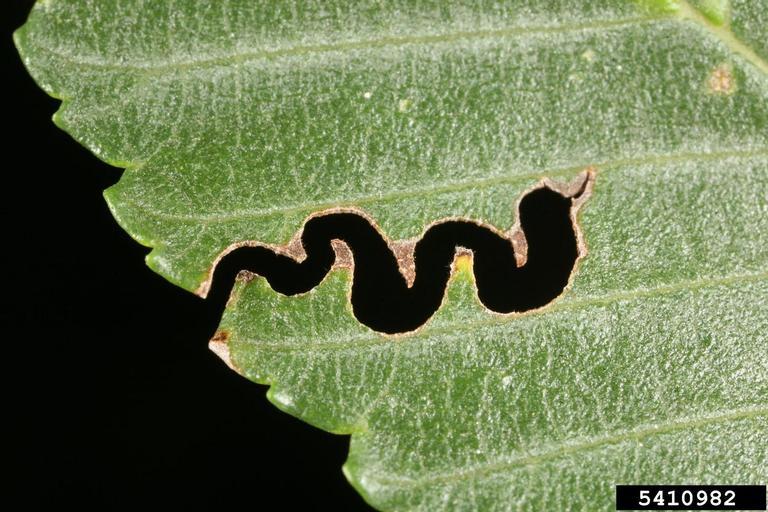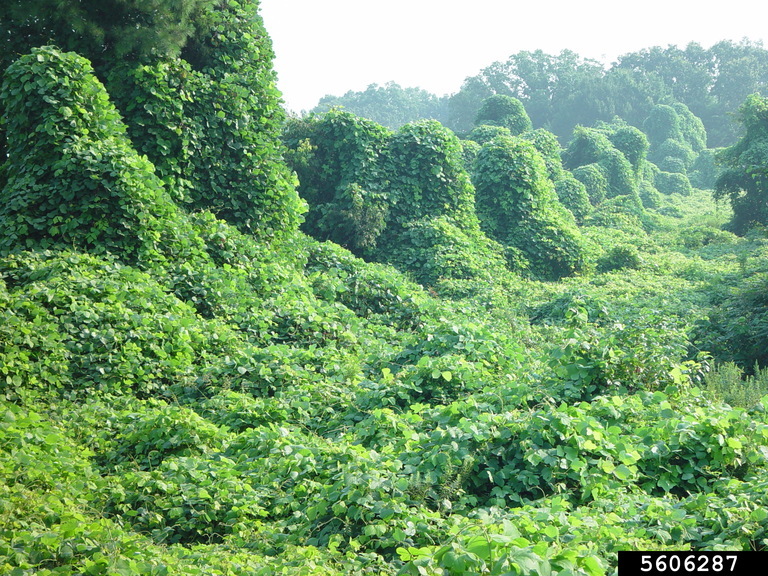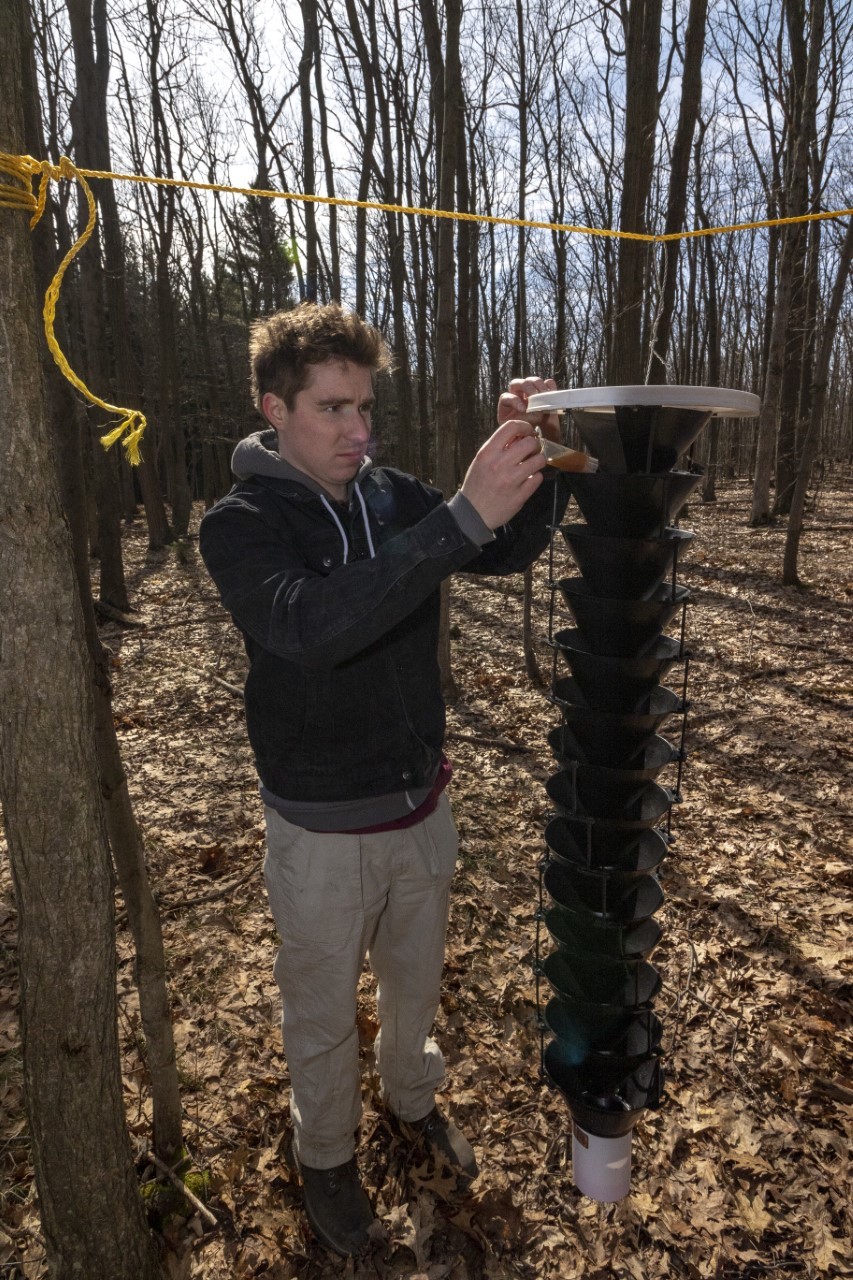October Invasive Species News - New Exotic Pest found in St. Lawrence County
The New York State Department of Environmental Conservation sent this bulletin on 10/07/2022 02:30 PM EDT |
| DEC Delivers - Information to keep you connected and informed from the NYS Department of Environmental Conservation |
| Share or view as a web page || Update preferences or unsubscribe |
October Invasive Species News |
New Exotic Pest Affecting Elm Trees found in St. Lawrence County
On September 26th, DEC announced that the elm zigzag sawfly (Aproceros leucopoda) was detected for the first time in New York State at three locations in St. Lawrence County, including Wilson Hill Wildlife Management Area, Brasher State Forest, and Lost Nation State Forest. This exotic pest feeds exclusively on elm trees and can cause severe defoliation, branch dieback, and crown thinning. Although the sawfly has not yet been shown to cause tree mortality, repeated defoliation by established sawfly populations would put added stress on native elm trees already heavily impacted by Dutch elm disease. Native to East Asia, the elm zigzag sawfly was discovered in southern Québec in 2020. DEC's Division of Lands and Forests staff began surveying for the pest along the Canadian-U.S. border in 2021. DEC conducted surveys at 12 State-owned properties in proximity to where the sawfly was detected in Canada and that also have a high density of elm trees. Surveyors looked for the distinctive zigzag pattern, for which the insect is named, left behind as the larvae feeds on elm leaves. At this time, sawfly populations appear to be at low levels and causing only minor damage. Additional surveys will be performed throughout the fall to determine the extent of the sawfly's presence and impact in the region. DEC encourages the public to report sightings of the elm zigzag sawfly through NY iMapInvasives' online reporting system. The Saint Lawrence and Eastern Lake Ontario Partnership in Regional Invasive Species Management (SLELO PRISM) also has opportunities for the public to get involved in their volunteer surveillance network. For more information about the elm zigzag sawfly, visit the Invasive Species Centre website. For more information about terrestrial invasive species in New York State and how to help prevent their spread, visit DEC's website. Photo: Gyorgy Csoka, Hungary Forest Research Institute, Bugwood.org Be on the lookout: Kudzu
Kudzu, a fast-growing invasive vine originally native to Asia, has been found in 14 counties in New York State, entirely in the Hudson Valley, New York City, and Long Island. Kudzu is a semi-woody vine that has compound leaves made up of three-lobed leaflets that are 2-5 inches long. It can grow to completely cover and shade ground areas and will even climb trees and structures. The vines have bristly orange hairs, and the flowers are red to purple. Learn more about kudzu on the New York Invasive Species Information website. Due to DEC and partner control efforts, 1/3 of all known kudzu sites in New York currently have no kudzu vines. 27 sites are considered eradicated, having no plants found for 3 years, and 37 have had no plants found for 1 or 2 years and are still being monitored.
If you think you’ve found kudzu, report it! Take photos of the plant including close-ups of the leaf, vine, and flower or seed (if present). Make a note of the location and an estimate of the size of the infestation. Call 845-256-3111, text 518-320-0309, or email invasiveplants@dec.ny.gov. Kudzu leaf photo: James H. Miller, USDA Forest Service, Bugwood.org DEC Forest Health Diagnostic Lab Publishes Open-Source Research PaperArticle published in Forest Pathology in partnership with the Cornell Plant Disease Diagnostic Clinic and the Bureau of Invasive Species and Ecosystem Health Oak Wilt Management Program
This September, DEC’s Forest Health Diagnostic Lab published a peer-reviewed scientific article titled “Early detection of the oak wilt fungus (Bretziella fagacearum) using trapped nitidulid beetle vectors.” In the article, lab researchers discuss the effectiveness of a new early detection method for the oak wilt fungus. This method involves trapping the nitidulid beetles that carry oak wilt fungus from tree to tree and using a PCR test to detect the DNA of the fungus on the beetles. This method should allow DEC and oak wilt researchers around the world to determine if the oak wilt pathogen exists in an area before infected trees are found. These methods can help land managers survey and prepare for oak wilt management. Learn more about oak wilt on DEC's webpage. Oak wilt symptoms can’t be seen in the fall, but remember to check your oaks for signs of unusual browning or leaf drop next summer. To prevent new infections, avoid pruning oaks in spring or summer. The lab is available for tree pest and disease diagnostic services! Found a weird bug or mushroom? Take clear pictures from multiple angles and email foresthealth@dec.ny.gov, or call 518-478-7813. Photo: Liam Somers, entomologist for the DEC Forest Health Pathology Lab checking nitidulid traps. |




